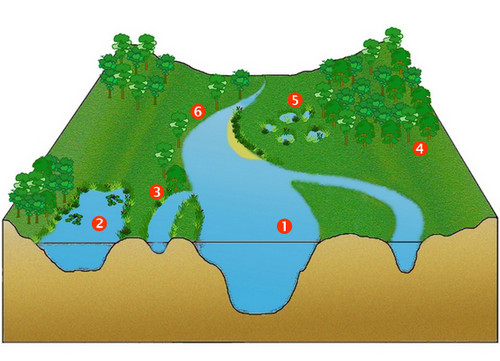The Lippe Floodplain - A Vital Diversity
Due to their constantly fluctuating water level dynamics, floodplains offer a variety of habitats. There are rather dry terrestrial, wet and semi-aquatic as well as aquatic habitats where most different animal and plant species are comfortable. This is the exact reason why floodplains are of great ecological importance and even called „Hotspots of species abundance“. This is also true for the mosaic of habitats in the Lippe floodplain which offers appropriate habitats for many indigenous animals and plants. By now, there are even very rare species habitats to find.
A Role Model of a Floodplain in the Lowlands
Floodplains are flats formed by the changing water level from high to low. Naturally developed floodplain landscapes are due to permanent changes and additionally constitute complex biotopes. Materials like sand and deadwood carried away with the flowing water are temporarily stored and afterwards transported again. Bank erosion is known to develop under the condition of undercut slopes whereas the accumulation of sand takes place at inner banks. Most diverse structures developing this way build dynamic habitats for many animal and plant species. In case of high water levels, floodplain soils suck water like a sponge. This has the effect that water is retarded and flood waves are moderated. Please read more about 6 typical floodplain habitats...
Floodplain habitats

